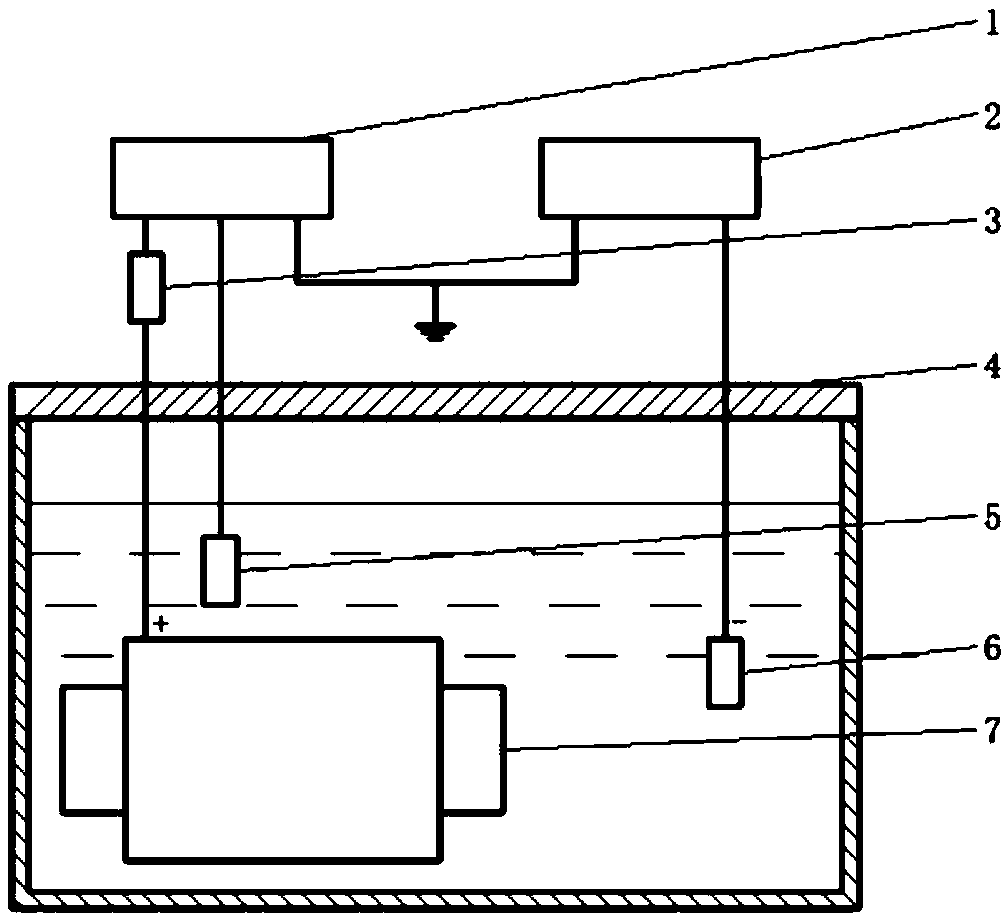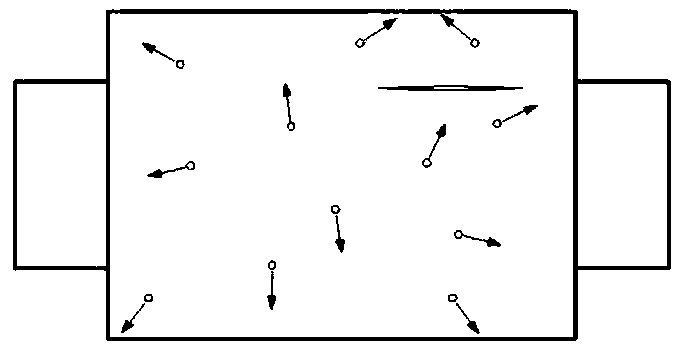Electrochemical rapid hydrogen diffusion method for large forgings
A large-scale forging, electrochemical technology, applied in the field of rapid hydrogen removal, can solve the problems of asynchrony in the transformation of the internal structure of temperature difference, unable to completely eliminate white spot defects, waste of energy and production equipment, etc., to avoid white spot defects and shorten expansion. Hydrogen time, energy saving effect
- Summary
- Abstract
- Description
- Claims
- Application Information
AI Technical Summary
Problems solved by technology
Method used
Image
Examples
Embodiment 1
[0026] 40Cr was cut and processed into a square thin plate forging with a side length of 3 cm and a thickness of 1 mm. The surface of the forging was polished to a mirror surface, rinsed with clean water, wiped with cotton gauze dipped in ethanol, and dried in a ventilated place for experimental use.
[0027] The forging as the anode is placed in the electrolytic cell of the electrochemical hydrogen expansion device, the electrolytic cell is filled with the prepared electrolyte, and the electrolyte is submerged in the forging; the electrolyte is 1L with a concentration of 0.2mol / L Sodium hydroxide solution, 0.8g of sodium sulfide is added to the electrolyte as an activator, and the temperature of the electrolyte is 25°C.
[0028] Turn on the power supply, apply constant potential polarization to the forging, and apply a polarization constant potential of 0.15V (relative to the reference electrode) to the forging provided by the potentiometer, observe and record the change of th...
Embodiment 2
[0030] The 65Mn specimen was cut and processed into a square thin plate specimen with a side length of 3 cm and a thickness of 1 mm. The surface of the specimen was polished to a mirror surface, rinsed with clean water, wiped with cotton gauze dipped in ethanol, and dried in a ventilated place for the experiment use. Adopt the method as embodiment 1, wherein electrolytic solution is the sodium hydroxide solution that 1L concentration is 0.15mol / L, adds 1.2g sodium sulfide as activator in electrolytic solution, applies 0.15V (relative to reference electrode) to forging Polarization constant potential, when the current density is less than 0.5μA / cm 2 , it can be considered that the hydrogen in the forging has dropped below the limit hydrogen content without white spots, and the experiment is ended.
Embodiment 3
[0032]The hydrogen pumped test piece and the untreated test piece in Example 1 and Example 2 were prepared into tensile samples by wire cutting. The hydraulic material universal testing machine was used to carry out the tensile test, and the stress-strain curves were recorded respectively, and the experimental results were compared.
[0033] Experiments show that the plasticity of the hydrogen pumped specimen is better than that of the untreated specimen, and its tensile strength is increased by about 1-5 percentage points.
PUM
 Login to View More
Login to View More Abstract
Description
Claims
Application Information
 Login to View More
Login to View More - R&D
- Intellectual Property
- Life Sciences
- Materials
- Tech Scout
- Unparalleled Data Quality
- Higher Quality Content
- 60% Fewer Hallucinations
Browse by: Latest US Patents, China's latest patents, Technical Efficacy Thesaurus, Application Domain, Technology Topic, Popular Technical Reports.
© 2025 PatSnap. All rights reserved.Legal|Privacy policy|Modern Slavery Act Transparency Statement|Sitemap|About US| Contact US: help@patsnap.com



